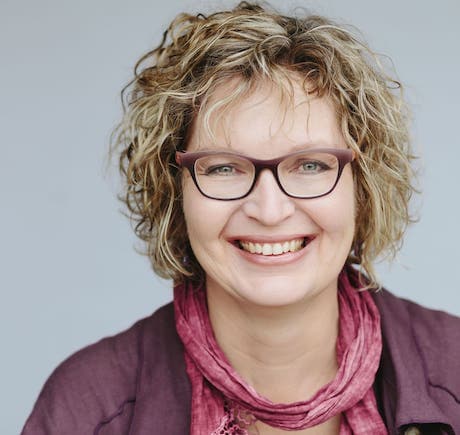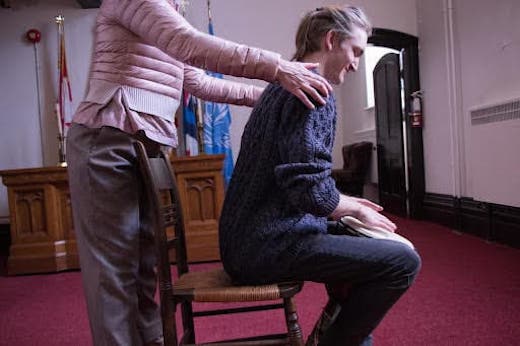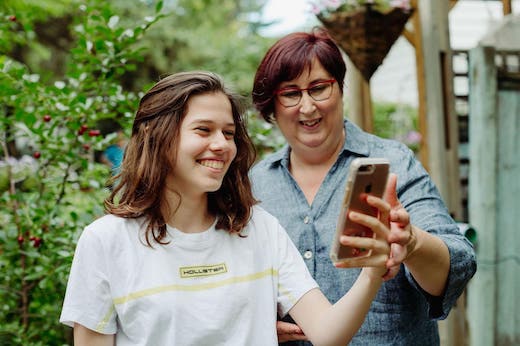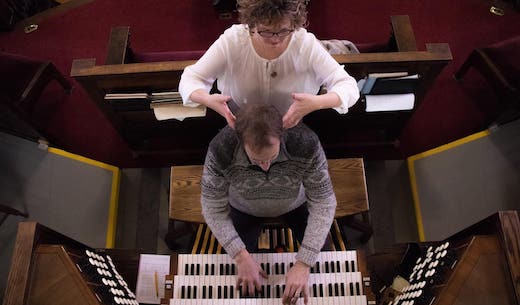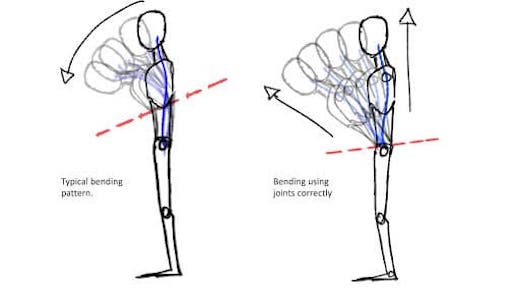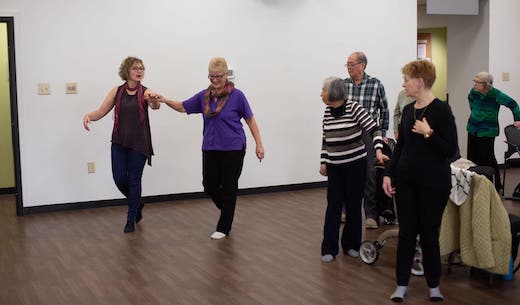Welcome to
Big Sky
Welcome to Big Sky
The original Big Sky Studio was located in Edmonton, Alberta. Big Sky is no longer in a specific building, but is an all-encompassing name for the work done by Candace Cox, Daisy Kaiser and other like-minded guest Alexander technique teachers at locations across Canada. Lessons at Big Sky are based on empowering students and helping them find their fullest potential, while supporting them through whatever challenges come their way.
Meet Candace
Candace Cox (BFA, ATI, STAT) came to Alexander technique from the world of theatre. After completing her BFA in theatre performance at the University of Regina (Canada) and Warwick (England), Candace could not stop thinking or talking about “the Alexander work.” She moved to England as a newly-wed in 1994, where she completed the three-year training to become an Alexander technique teacher with the inimitable David Gorman at The Centre for Training in London.
In 1999, Candace and her family returned to Canada, where she established Big Sky Studio in Edmonton. Besides a large private practice, she worked at performing arts institutions and faculties across Canada including the Stratford Festival, the University of Toronto, Queen’s University, the University of Regina, and Opera Nuova. She was a sessional instructor on the BFA Acting faculty at the University of Alberta for eight years, before relocating to Ontario in 2011.
The performing arts are her background and lifelong passion, and she loves to coach and teach performers of all kinds, and at all levels. However, in 2003, life changed forever for Candace when her mother was diagnosed with terminal cancer. Alexander technique was an unexpected source of strength for both women, and after her mother’s death, Candace became increasingly interested in the application of Alexander principles to managing chronic illness and pain. As well as helping people with arthritis, cancer, multiple sclerosis, scleroderma, chronic fatigue and fibromyalgia, Candace has found great joy and success in working with people diagnosed with Parkinson’s disease.
Candace has developed her understanding of Parkinson’s over the past decade by attending and presenting her work at the last three World Parkinson’s Congresses: Montreal in 2013, Portland in 2016, and Kyoto in 2019. She hopes that her new book, Living Daily: Alexander Technique for Parkinson’s Disease, will not only provide support and hope for people with Parkinson’s and their families, but will also further her quest for a large scale clinical study looking at the impact of Alexander technique on the disease.
Candace continues to teach regularly in Eastern Ontario, and bi-monthly in Alberta. She is looking forward to travelling extensively to give workshops on using Alexander technique for Parkinson’s patients, their care-givers, and other Alexander teachers. She makes her home with her husband, pianist Mitchell Cox, on a pastoral bit of land in Prince Edward County.
Meet Daisy
Daisy Kaiser (RMT, CST, ATI) came to Alexander technique from the world of dance to help build and enhance her skills. A graduate of the dance program at Edmonton’s Grant MacEwan College, Daisy was a dancer with the Brian Webb Dance Company and spent 15 years as an independent choreographer and teacher.
Her fascination with the human body led her to explore it in other ways, as both a cranio-sacral and massage therapist, as well as a student of contemplative meditation techniques and Asian movement studies in Qigong. An injury later found her using Alexander technique intensely along with regular Pilates to rehabilitate her back. But her most profound experience with Alexander technique came when dealing with a breast cancer diagnosis that was compounded by a major surgery and intensive treatments. Her way forward from that time in her life was one of little steps gained daily, always seeking deep within her to find and apply the principles of the Alexander work. This gave her comfort and helped her accept and find ease with where she was.
Daisy’s performing arts dance background lead her to study Alexander technique in the 1980’s, and she remained passionate about the principles for two decades. The untimely death of Richard Ireton in the 1980’s put a sudden stop to her training until 2007, when she certified as a teacher with Alexander Technique International under Tommy Thompson, Bob Lada and Cloe Wing. She immediately embarked on the year-long Apprentice Program at Big Sky Studio.
Daisy’s professional development over the past 10 years has continued with two of the most important mentors of her life, Candace Cox of Big Sky and Cathy Madden at her Integrative Alexander Technique Studio Seattle. Their work continues to inform her way of teaching. Daisy now teaches alongside Candace at Big Sky, and still journeys regularly to study at the Friday Harbour Lab Residential Retreats and in Seattle with Cathy. And she couldn’t forget Marjorie O’Connor, her personal fitness trainer, who has also had her back all these years.
Daisy loves being able to help people find their inner strength and joy in the wonders of the human body, sprinkling a little humour on top. Her kinesthetic sense and deep emotional intelligence provide a profound supportive environment for her students. She lives in Edmonton with her wonderful partner, Jack.
Alexander Technique
Alexander technique is an educational approach developed to change functional patterns and overcome habitual ways of thinking and moving. It is not a passive therapy, but requires students to actively participate and drive their own learning. The aim of Alexander technique is to allow students to function with greater ease and confidence, whether in a specific activity or simply the act of living.
Alexander technique is about conscious change. It is about responding differently as you move through the world. It will change how you stand, sit, walk, talk, move and balance. It will change the way you think.
Why the process?
Everyone benefits by learning to function with less stress and tension in their daily lives. Pain and imbalance can present both physically and mentally. The role of Alexander technique is to teach you to identify the source of a problem and then choose a different way. We often put far more effort into everything we do than is needed. Life can be easier.
Alexander technique belies traditional Western ideas around the concept of aging. We do not have to accept that our ability to move and function will decrease as we grow older; Alexander students of all ages, and even those with chronic illness or pain, have found greater movement and balance than they had in previous decades.
Alexander technique is foundational work. Ideally, its principles should be taught before any other class that involves movement or exercise so that you understand how you are designed to function rather than inadvertently practising your familiar and comfortable “bad habits.” You may have to completely change the way you move, and in the beginning it will feel odd—this is why you need a teacher, and why we use a lot of mirrors!
Who does this work touch?
We can all benefit by improving balance and reducing stress in our daily living. Specific examples include:
Those in chronic pain or distress: you can learn to understand how the way you move in daily activity impacts or even causes you pain—and that you can change! Besides helping you physically, Alexander can help you with balance and ease on all levels.
Musicians and singers: you can learn to understand how your body is designed to move and function, and how the habitsand styles associated with playing/singing can interfere with this! Actors and performers: you can learn to use more of yourself. This “embodied consciousness” allows you to work more deeply, as well as managing nerves and giving you a profound understanding of how physicality affects character (and how to play that).
Athletes and anyone pursuing fitness: you can learn how to work with less compression and contraction, so that you are advancing your skill, optimising health benefits, working in the most efficient way, and not inadvertently reinforcing faulty and even dangerous habits.
Children and teens: can benefit enormously by having a more accurate perception of themselves in space. Even just a couple of lessons at a young age can ward off harmful movement patterns and the resulting “bad” posture, and/or help with confidence and empowerment.
The science behind it
Although Alexander technique is an educational process, rather than an applied therapy, it does have significant therapeutic benefits. Alexander technique changes and improves the way you function, day to day. People often seek medical help for the results of mis-function: chronically tightened muscles, joint damage, anxiety, stress and pain. Alexander technique helps you look at where those symptoms might be coming from, and then find ways to think and move differently to eliminate the source of the problem.
There is a growing body of clinical research as well extensive anecdotal evidence that supports the efficacy of Alexander Technique for everything from back pain to performance anxiety. You can review the literature yourself from the catalogue on the web-site of the Society for Teachers of Alexander Technique (STAT).
Published ResearchAlexander Technique
Parkinson's Disease
Alexander technique teachers are not usually doctors; we are, however, movement specialists, trained to see patterns of movement and thought. Parkinson’s disease interferes with normal function—Alexander technique strives to restore function. The first clinical inquiries into the impact of Alexander Technique were published in 2002, with encouraging results, and subsequent small scale studies are also very hopeful.
At Big Sky, our work with Parkinson’s disease began over a decade ago with a single patient who came regularly for lessons over several years. As time passed we realised that her ability to function “as a real person” (in her words) was growing, even though the illness was undeniably progressing. We presented our work with her as a scientific poster at the World Parkinson’s Congress in Montreal in 2013. To date, in 2020, this student still astounds those around her with her ability to choose to move and balance in the face of advancing symptoms, even twenty years after diagnosis.
We carried out a small study to look at the impact of five days of intensive Alexander technique lessons on a group of Parkinson’s patients in 2016. At the end of five days, all patients had improved, with an increase in height, and significant reduction in reported anxiety levels. One of the patients experienced clinically significant changes in mobility and balance, and has gone on to work intensely to apply Alexander principles to tasks of daily living and exercise with the help of his wife, and regular check-ins with his teacher. He has regained his independence, and his hope. Years later, he continues to have improved mobility, balance and communication. We presented our findings at the World Parkinson’s Congress in 2016.
Candace Cox, Director of Big Sky Studio, has written a book called Living Daily: Alexander Technique for Parkinson’s Disease. She hopes this will be of use to not just Parkinson’s patients and groups, but for other Alexander technique teachers as well as physiotherapists, occupational therapists, and other medical professionals working with this illness.
Please reach out to Big Sky if you have questions about or interest in our work with Parkinson’s disease. Our next goal is a large scale, international study on the impact of Alexander technique on Parkinson’s. Candace is willing to travel to support and work with teachers, care-givers and patients around the world to make this happen.
More Info - BlogLessons at
Big Sky
Whenever possible, we encourage people who are new to Alexander technique to access a group lesson or workshop to begin with. Our groups are about understanding and compassion, as well as being fun and interactive. They are a good way to get a grounding in some of the basic Alexander technique principles—and it is always easier to see what is happening in someone else than in yourself! We also like the camaraderie that happens in a group setting; it can be good to know that you are not alone in your “habits.”
We offer group lessons several times a year; to hear about when the next one is happening, please sign up for our mailing list.
We also can tailor our workshops to specific needs, from equestrian to vocal arts. We can design a one-off or weekend event for singers, actors, riders, Parkinson’s groups and more.
Private Lessons
While there is much to be learned in a group setting, one-on-one sessions with a teacher are the backbone of understanding how these principles can be applied to your particular situation. At Big Sky, our teachers engage your understanding as well as facilitating a better organization in your body and function. This requires physical and verbal guidance. Lessons begin where you are; there is no right or wrong, only possibilities for change.
1
Online Lessons
Ideally, Alexander lessons include one-on-one time. However, the realities of isolation and the scarcity of teachers in some regions means that we also offer lessons via Zoom. We encourage students to access a copy of Living Daily as support for on-line study.
2
Location & Booking
We offer regular private lessons in the Edmonton area, and in Eastern Ontario from Cobourg to Ottawa. A private lesson ranges from 40-50 minutes. Contact Daisy or Candace directly for prices, availability, and to book.
3

Living Daily
Although Living Daily is directed towards Parkinson's disease, the majority of the information is relevant for the general population. It was written to be a "manual" for approaching your daily life. It contains a number of specific movements and small exercises, all designed to promote more balanced and open function, and is an excellent support for all students of Alexander technique.
Available as a print book from Amazon outlets worldwide, or contact Candace for details on local stockists.
Living Daily is available online in unabridged PDF format. Find it, along with a companion set of short instructional videos, at the link below
Reviewer: "Candace’s book provides invaluable information and tips for balance and improved mobility. Her knowledge on Parkinson’s disease is evident in the explanations she gives based on her experience with her students and their caregivers. This is one of the best Alexander Technique books written. Very much a worthwhile read."
Available for purchase
Living Daily Course
Find out more about Candace's 4-week "Living Daily" course for people with Parkinsons which runs most months
Contact
& Booking
Teachers open the door, but you must enter yourself
(Chinese Proverb)
Big Sky Alexander is active both in the community and online. To follow and view media, please visit the following links below.
Blog & News Reviews
Candace Cox - CBC Feature Big Sky Alexander Blog Bob’s Shoes Video Radio-Canada FeatureUpcoming Events
What's happening at the StudioLiving Daily Course
Learn MoreContact Candace & Daisy
Candace Cox
bigsky.alexander@gmail.comDaisy Kaiser
daisyalexanderteacher@gmail.comBooking Sign Up
Thank you!


